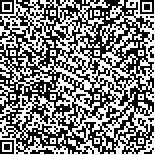| 摘要: |
| [摘要] 目的 探讨应用3D打印腰神经根变异(LNRA)模型测量Kambin三角面积变化的临床价值。方法 选择2018年7月至2020年6月贵港市人民医院收治的LNRA患者4例,年龄44~65岁,男性2例,女性2例。变异类型:根联合型3例,尾侧起源型1例。通过采集患者的腰部三维MRI数据进行数字化医学建模,并测量Kambin三角区相关参数。通过3D打印技术构建患者LNRA模型,并在模型上实施孔镜置管模拟操作。结果 基于3D打印模型的模拟操作发现,4例患者椎间孔Kambin三角面积分别为0.00 mm2、11.60 mm2、15.33 mm2、22.20 mm2,可容纳最大套管直径分别为0.00 mm、2.74 mm、3.88 mm、3.93 mm;椎管内Kambin三角面积分别为0.00 mm2、26.72 mm2、36.38 mm2、76.88 mm2,可容纳最大套管直径分别为0.00 mm、3.29 mm、5.33 mm、7.18 mm。结论 3D打印LNRA模型可让临床医师对LNRA患者的Kambin三角区变化情况有直观、立体的了解,有利于降低手术风险,提高疗效。 |
| 关键词: 3D打印 腰神经根变异 Kambin三角区 模拟操作 |
| DOI:10.3969/j.issn.1674-3806.2021.10.09 |
| 分类号:R 681.6 |
| 基金项目:广西自然科学基金项目(编号:2018GXNSFAA294129);广西科技计划项目(编号:桂科AD17129017) |
|
| A study on the clinical value of using 3D printed lumbar nerve root anomalies model to measure the change of Kambin triangle area |
|
ZHANG Qi-biao, JIANG Jian-zhong, LUO Xiang, et al.
|
|
Department of Orthopedics, Guigang City People′s Hospital, Guangxi 537100, China
|
| Abstract: |
| [Abstract] Objective To explore the clinical value of using three-dimensional(3D) printed lumbar nerve root anomalies(LNRA) model to measure the change of Kambin triangle area. Methods Four LNRA patients, aged 44-65 years, admitted to Guigang City People′s Hospital from July 2018 to June 2020, were selected, including 2 males and 2 females. Variation types: 3 cases of root-associated type, 1 case of caudal origin type. Digital medical modeling is performed by collecting 3D magnetic resonance imaging(MRI) data of the patients′ waist, and the relevant parameters of Kambin triangle area were measured. The patients′ LNRA model was constructed through 3D printing technology, and the simulation operation of placing tube with aperture mirror was implemented on the model. Results The simulation operation based on the 3D printing model found that the Kambin triangle areas of the intervertebral foramen of the 4 patients were 0.00 mm2, 11.60 mm2, 15.33 mm2 and 22.20 mm2, respectively, and the maximum permissible cannula diameters were 0.00 mm, 2.74 mm, 3.88 mm and 3.93 mm, respectively; the Kambin triangle areas in the spinal canal were 0.00 mm2, 26.72 mm2, 36.38 mm2 and 76.88 mm2, respectively, and the maximum permissible cannula diameters were 0.00 mm, 3.29 mm, 5.33 mm and 7.18 mm, respectively. Conclusion The 3D printed LNRA model allows clinicians to have an intuitive and three-dimensional understanding of the changes in the Kambin triangle area of LNRA patients, which is beneficial to reducing surgical risks and improving curative effects. |
| Key words: Three-dimensional(3D) printing Lumbar nerve root anomalies(LNRA) Kambin triangle area Simulation operation |

